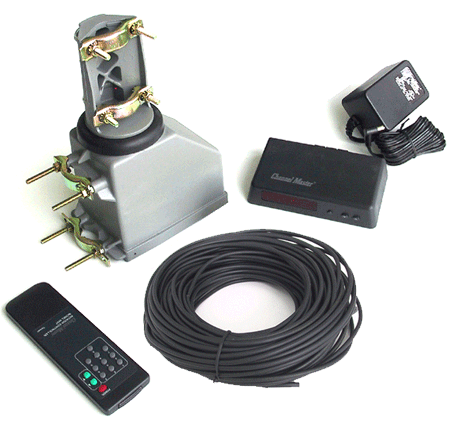Once upon a time, it was common for antenna rotators to be found in small towns all over the country. If you found yourself in central New Jersey, where it’s possible to get New York and Philadelphia stations easily if you just move the antenna, I bet you’d find every single house had a rotator back about 45 years ago. Today they’re scarce, so scarce that a lot of people don’t know what they are or how they work.
A rotator is a device that points your antenna using a motorized base unit. You can see the base unit in the picture above. You put the antenna into the rotator, and then simply use the remote control to move it. More expensive rotators have presets so you’re not always guessing.
The rotator itself requires a second wire to run to the roof which carries power and control signals. There’s also a base unit somewhere in the house that plugs into the wall and possibly acts as a receiver for a remote control (in more expensive units; less expensive ones can be controlled straight from the base.)
If you are right between two major cities that are in different directions, a rotator’s the thing for you. Most antennas can only see about one quarter of the sky at one time, and a rotator will let an antenna see the whole sky, although it’s only one quarter at a time.
It’s worth mentioning that you may have to manually scan for channels or add channels manually to your TV if there are some channels you can’t get at the same time, and if you’re sharing the antenna with more than one TV, then everyone’s going to get the same reception. If you need to watch two channels on two different TVs from two different locations, you’ll need… wait for it… two different antennas.





